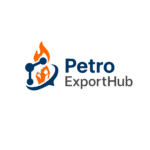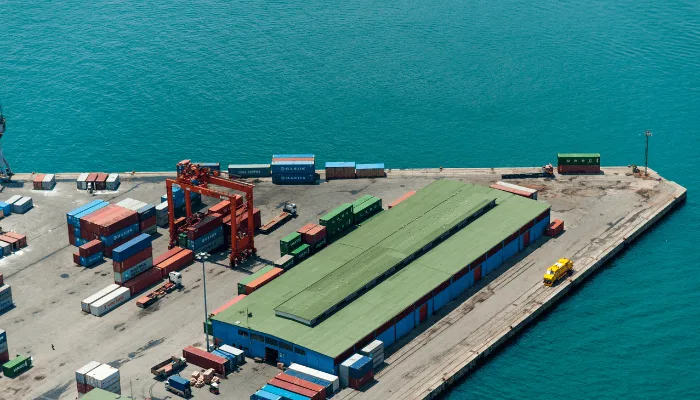Export Opportunities for SN150 Base Oil from the Middle East
The Middle East is emerging as a strategic exporter of SN150 base oil, thanks to its captive Group I refining capacity, low operating costs, and favorable shipping routes. For international buyers and producers, understanding SN150 base oil price, regional supply dynamics, and export pathways is essential to secure consistent, high-value supply at competitive pricing.
1. Middle East as a Global SN150 Export Hub
Refinery Strength: Countries like Saudi Arabia, Iran, UAE, and Kuwait boast large Group I output, enabling them to export volume-grade SN150 reliably.
Cost Advantage: Lower energy and labor costs reduce production expenses and support SN150 base oil price competitiveness.
Logistics Flexibility: Proximity to major markets (South Asia, Africa, and Europe) and reliable ports (Jebel Ali, Bandar Abbas, etc.) enhance delivery speed and cost efficiency.
2. Key Export Destinations & Trends
| Destination Region | Demand Segment | Export Rationale | Price Sensitivity |
|---|---|---|---|
| South Asia (India/Pakistan) | Automotive, industrial blends | Import-reliant, price-conscious | High |
| Southeast Asia (ASEAN) | Lubricants, textile process oils | Growing industrial demand | Medium |
| Africa | General-purpose lubricants | Infrastructure and fleet maintenance | High |
| Europe (Southern ports) | Industrial niche sectors | Occasional Group I needs | Low–Medium |
Middle East exporters often win tenders by offering competitive SN150 price and reliability, especially in markets dependent on imports.
3. Competitive Advantages of Middle East Exporters
3.1 Cost Efficiency & Pricing
Middle Eastern SN150 producers can offer 5–10% lower SN150 base oil price than imports arriving via Europe, especially when shipped via direct sea lanes.
3.2 Long-Term Supply Stability
Key refinery producers in the region maintain steady Group I output. This helps buyers forecast costs, secure term contracts, and manage inventory predictably.
3.3 Portfolio & Blending Capabilities
Many Middle East-based suppliers provide SN150 in various grades (e.g. bright stock, SN500) enabling formula flexibility and large-volume blending discounts.
4. Supply Chain Dynamics & Contract Models
Term Contracts with Price Formulas: Contracts often allow part of price to float based on Brent crude/VGO, with capped logistics premiums—ensuring transparency and managing volatility.
CIF vs FOB Options: Many regional buyers opt for CIF pricing to better manage delivery risk and landed cost, while others control logistic costs via FOB deals.
Dual Sourcing Strategy: Middle East exporters supporting dual-sourcing reduce supply risk during peak demand seasons or refinery turnarounds.
5. Risks & Considerations
Currency & Banking Barriers: In some countries (e.g., Iran), buyers face banking restrictions which affect contract enforceability.
Regulatory Considerations: Buyers transitioning toward lower-VOC or synthetic basestock might limit future SN150 demand.
Logistics Volatility: Port congestion and geopolitical risks can impact shipping timeliness and CIF pricing stability.
Scenario Table: Export Opportunities in 2H-2025
| Scenario | Middle East Export Behavior | Impact on SN150 Price | Buyer Action |
|---|---|---|---|
| Global refinery shutdown | Increase export volumes | Slight discount on base price | Secure term cargo; spot buys hedged |
| Regional demand surge | Premium for near-term cargoes | Spot SN150 base oil price spikes | Use near-port stock; negotiate CIF |
| Cargo shipping delays | Slower shipments, log delay | Diverged FOB vs CIF pricing, steeper cost | Shift to alternate ports/inventory |
| Regulatory transition stage | Push toward Group II blends | SN150 price may decline in some markets | Match spec needs; plan product mix |

Low-cost production and strong export logistics make SN150 base oil from the Middle East highly competitive.
Exporters offer volume, portfolio flexibility (SN150 + SN500), and capability for formula blending.
Dual sourcing and CIF options provide risk mitigation and pricing control for importers.
Term contracts with Brent/VGO-linked pricing help buyers manage volatility.
Looking for Base oil suppliers in Iran ?
- Contact Us today and get connected with producers and export-ready logistics.
- sales@PetroExportHub.com

Related posts
Mono Ethylene Glycol (MEG) serves as a cornerstone for modern antifreeze and coolant formulations, offering reliable freezing protection and heat resi . . .
Explore Solvent 100’s specs, uses, and export opportunities from Iran. Ideal for paint, ink, and adhesive buyers in India, Turkey, UAE, and Africa. . . .
Explore everything you need to know about exporting sulphur from Iran in 2024 — including types, packaging, documents, ports, prices, and top import . . .
Explore Iran’s top ports for petrochemical exports, including Bandar Imam Khomeini, Assaluyeh, and Bandar Abbas. Compare infrastructure, accessibili . . .
Learn the key differences between polypropylene (PP) and polyethylene (PE), their applications, advantages, and how to choose the right polymer for yo . . .
Discover how a Turkish plastics manufacturer reduced costs by 22% through importing HDPE from Iran. Real-world case study by PetroExportHub. . . .
Learn why Iran is a leading exporter of polyethylene (PE). Discover grades, global applications, and how PetroExportHub connects buyers with top suppl . . .
We are here to answer your questions....
Petro Export Hub
PetroExportHub specializes in the export of premium-grade petrochemicals, minerals, and industrial chemicals from Iran, serving international markets with reliability, transparency, and tailored logistics solutions
Tehran Office
Phone:
0214865484 | +989127607241
Address:
Tehran..
China Office
TEL :
0211400
Address:
Zhongzhou Bie Lu, Zhongcheng Street, Yiwu City, Zhejiang Province, China
Quick Access
Quick Access
- Contact Our Sales Team
- Frequently Questions
- Shipping & Logistics
- Become a Partner
- Certificatins & Quality







